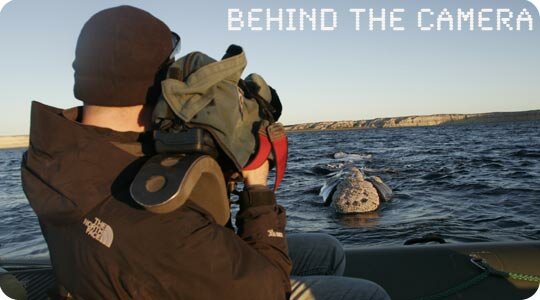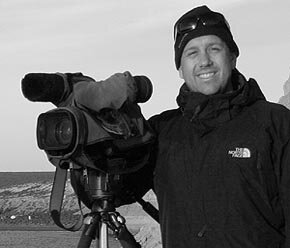Behind the Camera-An Introduction
There are a number of reasons why we are publishing these types of stories on our website - earthOCEAN.tv
Part of it, is to share the incredible experiences of being in remote places around the world, another is the importance of educating people about issues related to the environment, while exploration of our natural world is still very necessary and motivating on a number of levels.
The excitement one gets when capturing an experience on camera to share with others is very special. It offers the viewer the opportunity to perhaps discover a previously unknown aspect of their world.
My wife, Genevieve and I, have been very lucky to be involved in producing a program on PBS called The Voyage of the Odyssey - website:http://www.pbs.org/odyssey
From 2000-2005, we circumnavigated the globe on a whale research boat as part of a scientific expedition led by whale biologist Dr. Roger Payne. From the start, we were given a very broad mission. Along with the researchers and the crew on the boat, we were to document the experience, the highs and the lows, the research conducted onboard, interview the people we met, capture the places we worked, the challenges along the way, and of course, the 'unexpected'.
Over the 5 and a half years, sailing over 87,000 miles, working in 22 countries and visiting 180 ports, we produced over 500 reports called Odyssey Logs and over 50 short video documentaries. To say that we learned a lot along the way - is a vast understatement. One thing we never had time for, was to go behind the scenes and explain in detail how we actually did it - how we found the stories, how we put them together, or shared the sometimes incredibly difficult situations we found ourselves in. Sometimes we felt, we never truly answered the most common people asked us - what was it REALLY like?
The web is an incredible resource for information. Many sites I regularly visit are wonderful sources of information on topics relating to digital media. Because of the fast changing environment we live in, magazines and books on the topics of production, camera gear, trends in the industry, even 'how-to' articles, are often out of date in books and in magazines. The web has become the defacto source of the most current technical and creative information.
However, I have never come across a detailed resource in the production of wildlife, science or environmental media. So, over the coming months, I will go in depth about a number of issues I personally experience, related to wildlife filmmaking and photography - sometimes technical, sometimes anecdotal.
What is exciting about producing stories about the natural world is that you are always learning. No matter what country you are working in, what environmental challenges you face, what camera you shoot with, or any piece of software you use to put together the piece, the concept, the idea, and the message that is built with the tools you use, should always be the main focus of the story. I find that you will always learn, on every project no matter if it is producing a website, a documentary film, a DVD, or even just designing and writing a proposal in the very early stages of production.
To produce an engaging documentary or capture inspiring photographs that focuses on science or the environment can be tough. You have to be a good writer, an excellent communicator, a thorough researcher, someone who takes risks, but most of all an explorer who can see the fine details and step back to view the bigger picture.
So, in future Behind the Camera articles, I will write in depth about creating a documentary like "Southern Right Whales of Argentina" - from start to finish, as well as the challenges involved in doing so on a small budget with a very mobile studio. Because of the work we do, it often involves a lot of traveling, which means that to produce this type of media, we have to be able to carry all of our equipment with us and have to come up with creative ways to help tell a story.
Labels: argentina, southern right whales



0 Comments:
Post a Comment
<< Home